Progress from the last two days of work.
Sagged bellie and manhood
Your Custom Text Here
Progress from the last two days of work.
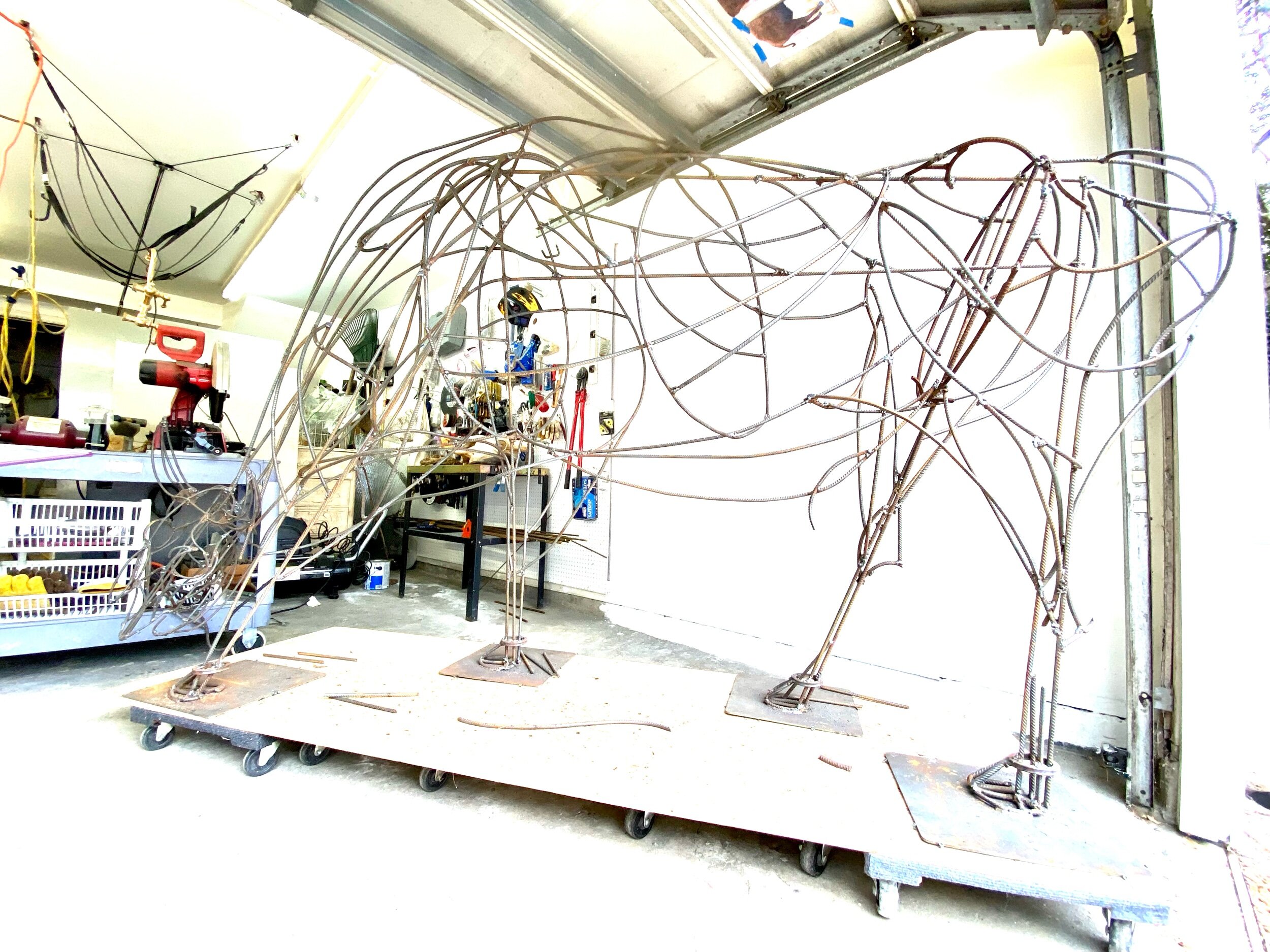

Sagged bellie and manhood
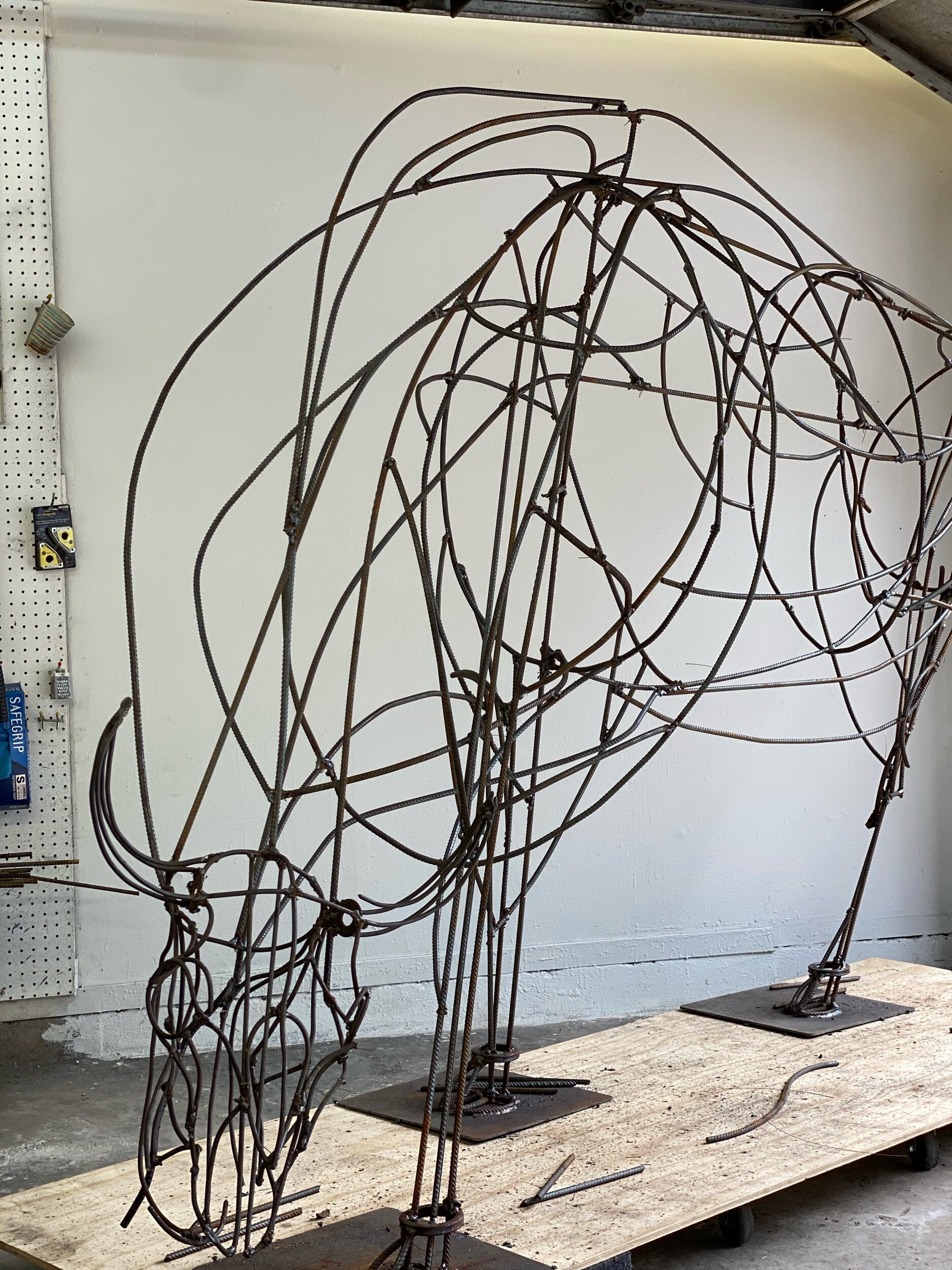
Ferlocks, hocks and nape

Right front leg chap and starting to build the neck muscles. The neck muscles are massive.
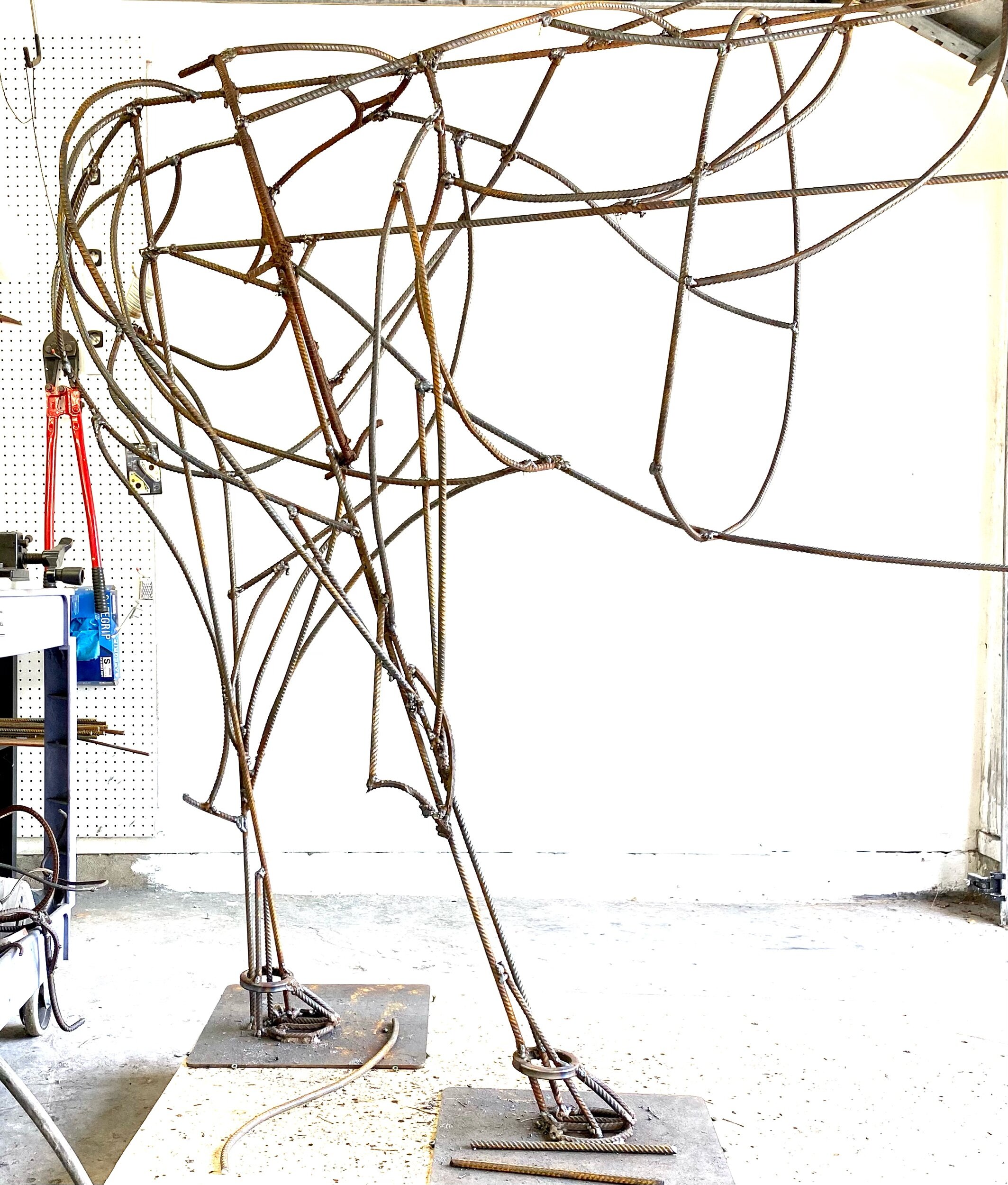
I build the legs on separate days. Left keg the hock curves up and right keg the Hock curves down. I still need fetlocks. I think bison have two per foot. More research
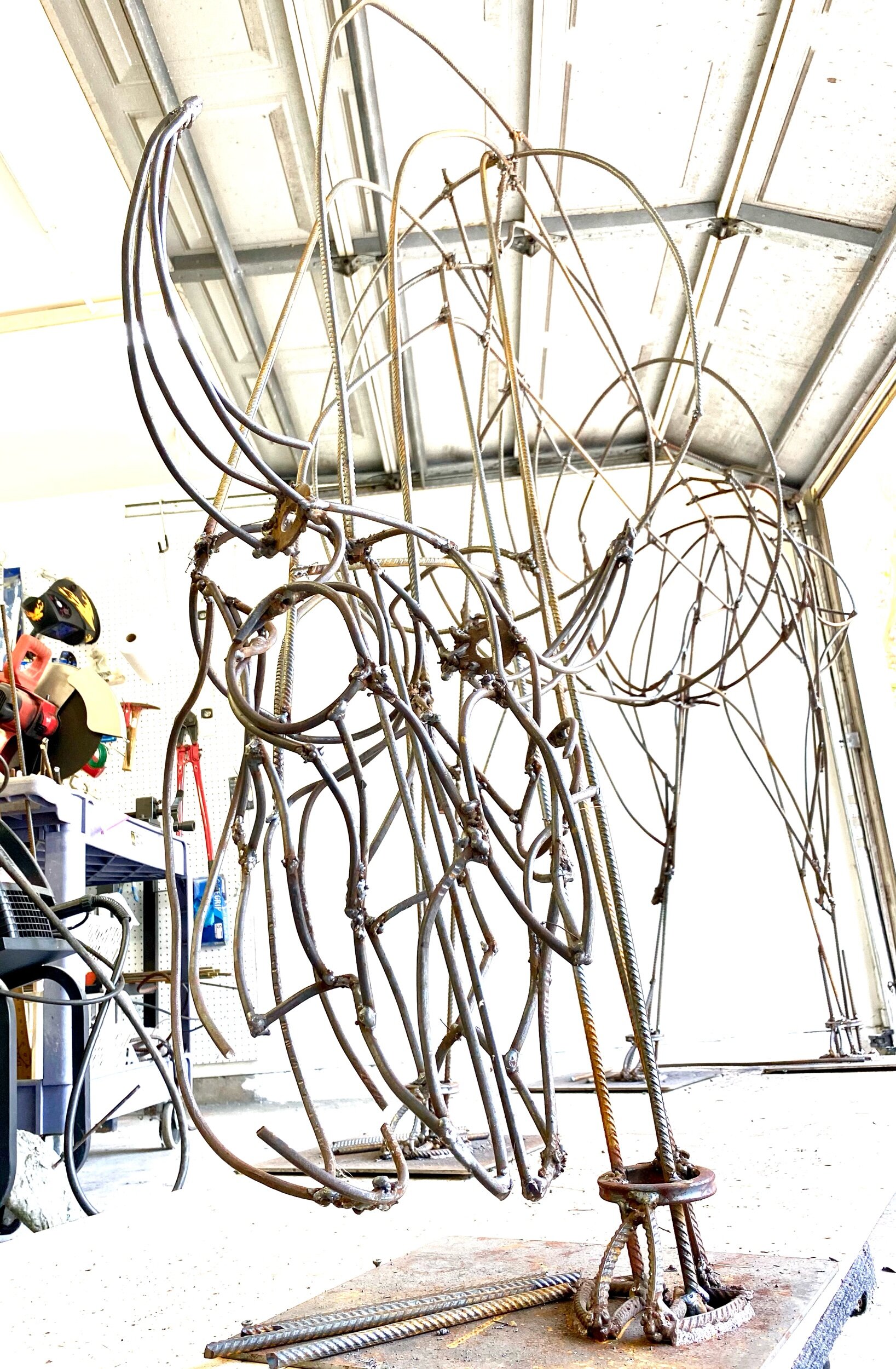
In creating a living sculpture, I have to accept change. I can not control the piece nor do I want to. From soil microbes to leaves, petals and butterflies, bees, skippers and caterpillars, I am always looking to the natural processes. I look to see what does the material want to make, what does it need to be. Competition, succession, disturbance, consumption are the sculpting tools of my collaborator, characteristics of the work. I have to let them follow their path to self-design their regenerating community. I bend my creative processes to the design principles developed through the ages on this planet for this place and time. The time is right to change how we landscape. I believe Houston is the right place and Houstonians the right people to plant the seeds.

Competition

Succession

Disturbance


Consumption

Front legs and right shoulder
20’ more of rebar.

I used 20’ more of rebar today to build the hip bones up on both sides and his right side in the stomach area of his side. I worked from the hip to his shoulder.

My work space is not large enough to get a good side photo.
Stomach, upper hip bones, and more hump.
He still looks like a hybrid giraffe bison, that is only because his muscles and fur come later.
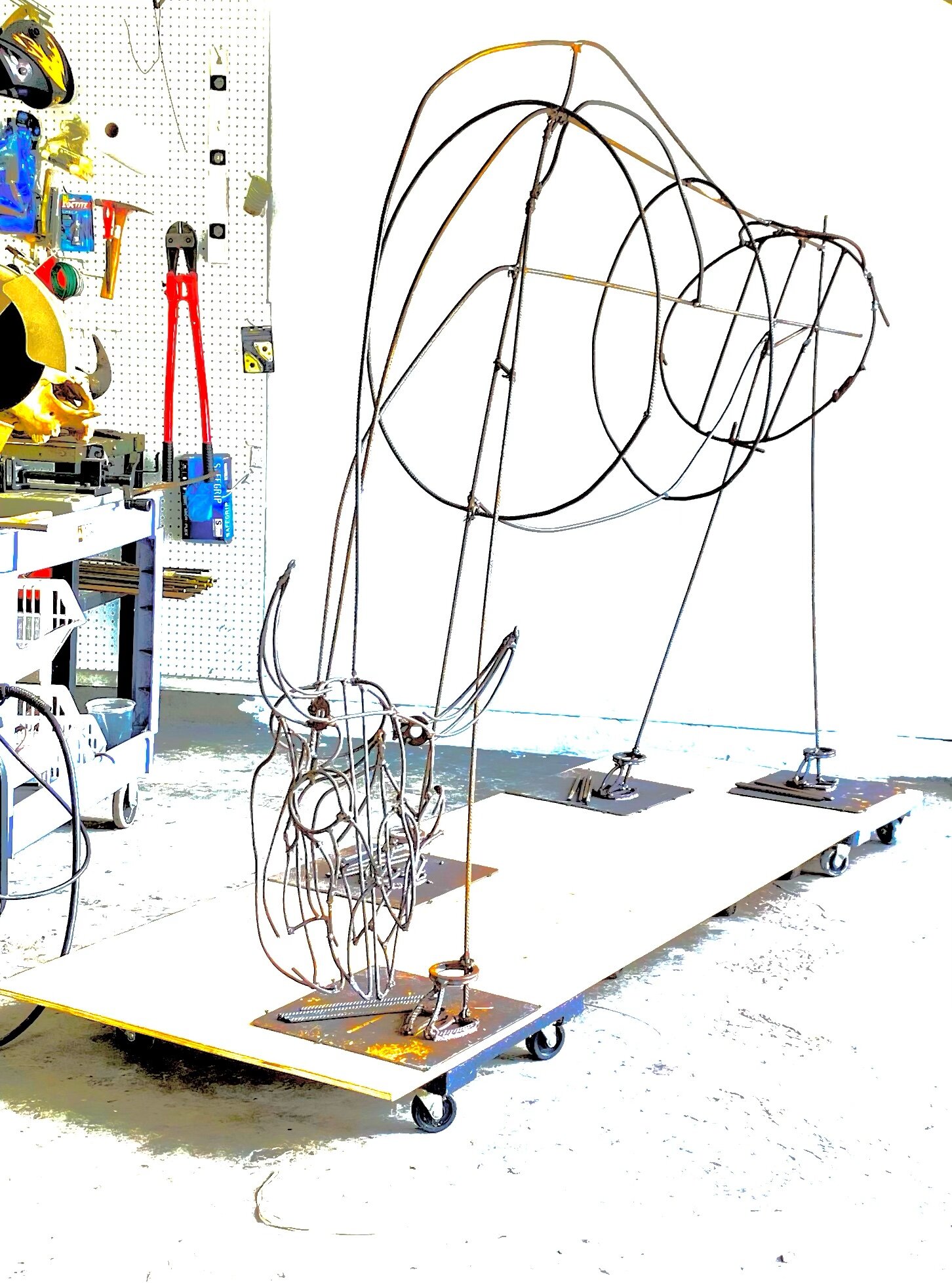
Another big day of welding..I added a big 96” circumference chest. Put the entire piece on four dollies and started his hump. Below are a few pics from todays work.

Behind my garage is a telephone pole. I use it to bend my rebar. This is a side view where I am going to bend the piece for the chest.
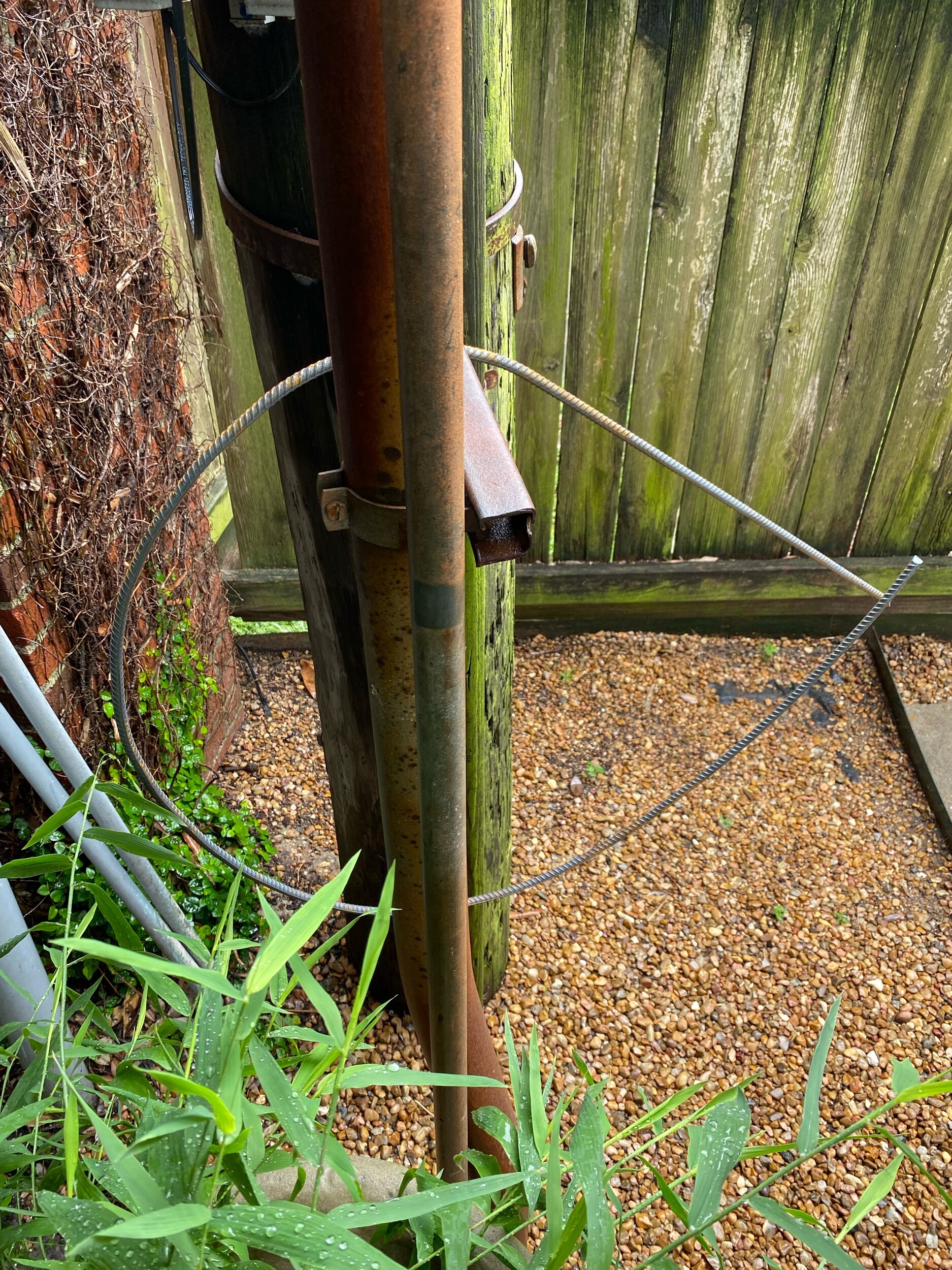
Halfway to becoming a bison chest.
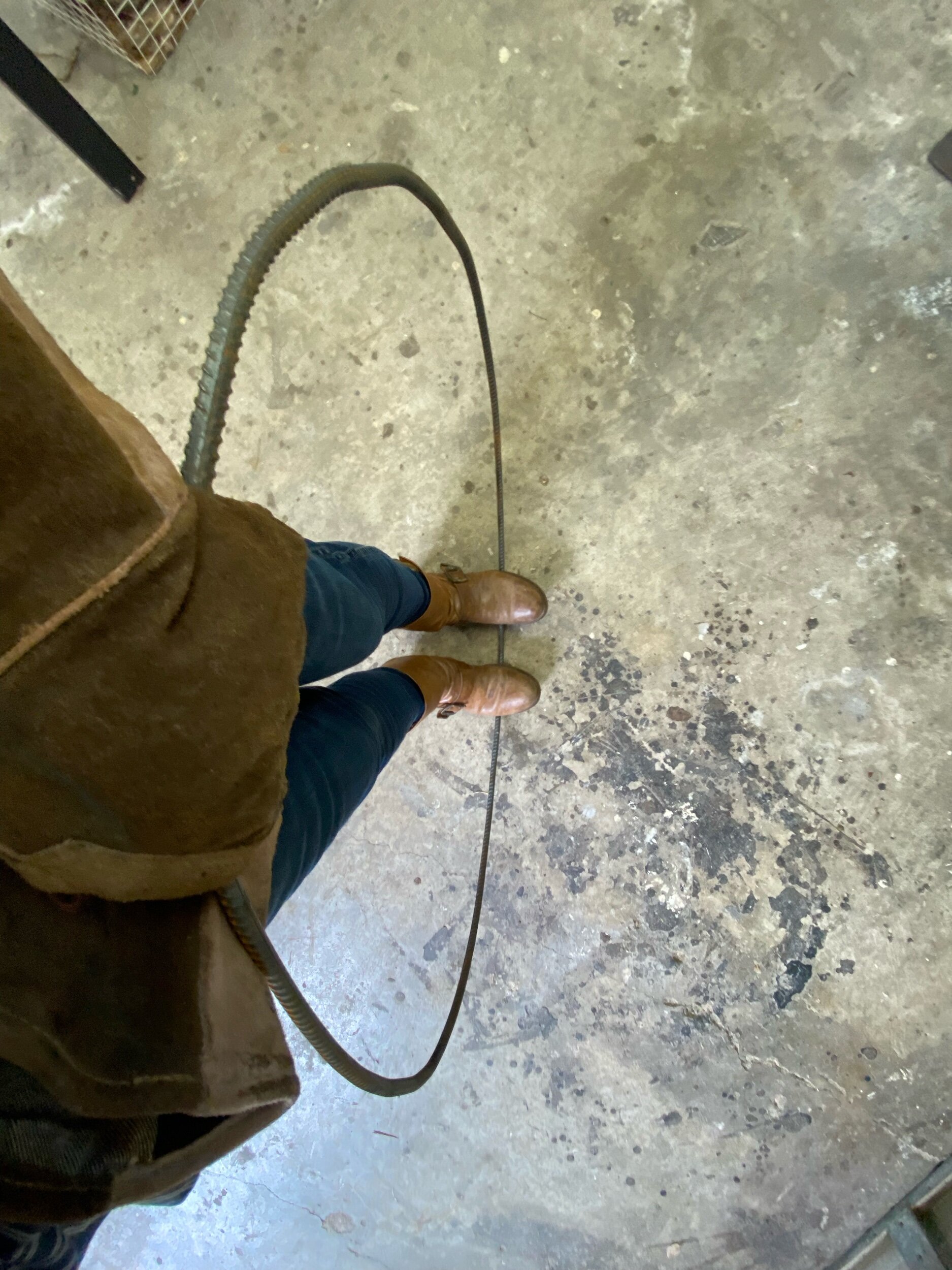
Then I use my weight to even out the shape.

I hang the chest over the back and decide if it is big enough.

Next I weld the ends together .

Recycling some old dollies from past work and deciding on the best plan. Balance and portability is the goal. The brown paper is the footprint of my bisons. Each leg is supported by a dollie.

Thanks to Curtis for getting me the plywood and helping me mount the beast. This is just for while I work on the sculpture and for transportation. It is not part of the work.

Just goofing around

My garage studio assistant is taking a sun break.
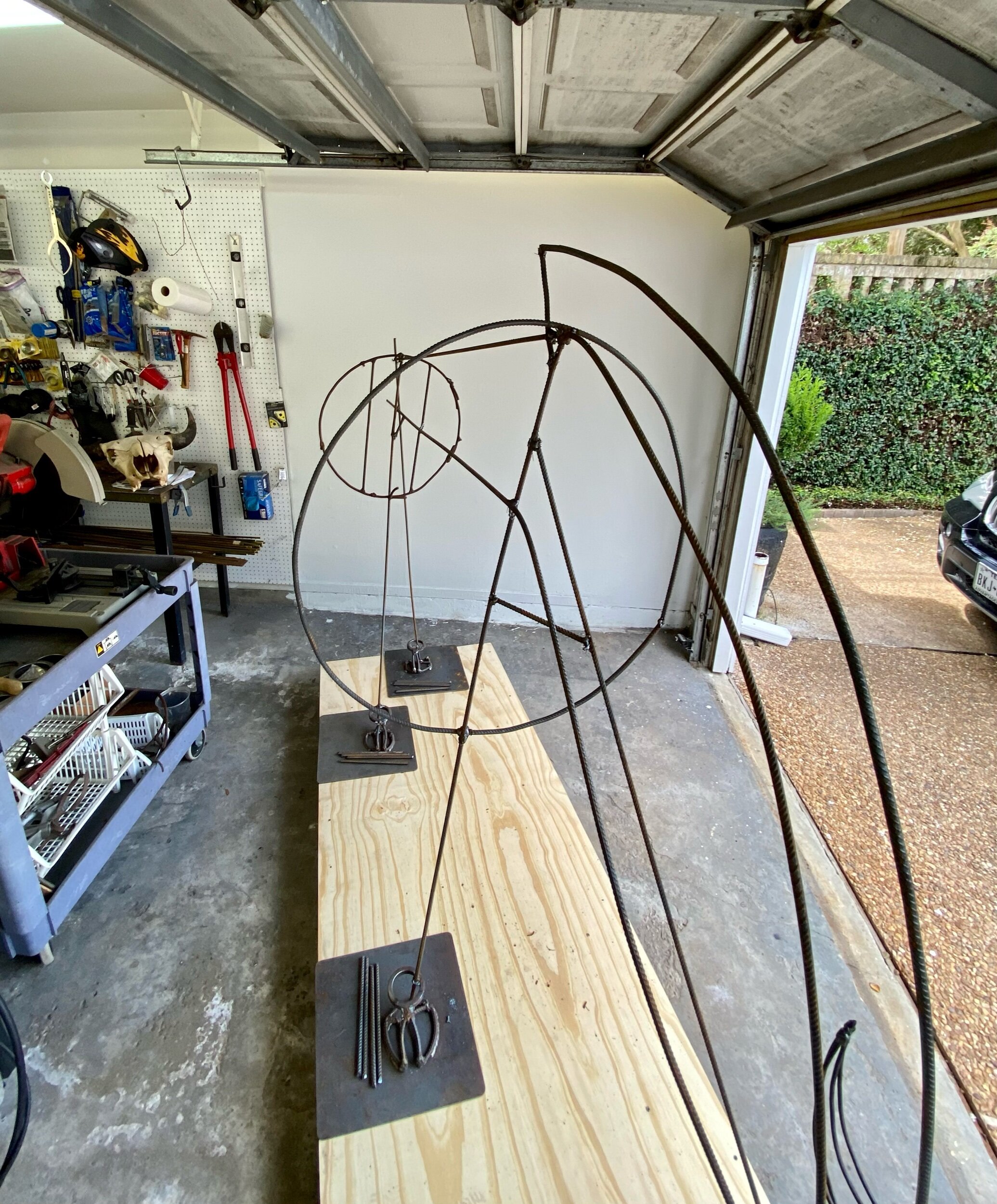
Starting to assemble the hump.

And that's a wrap.
July 5th.
Attaching the head—
I welded just one connection from the neck to the head. As I assemble other parts of his body I will continue to evaluate the position of the head. I want him to be his reaching to the side searching for the next blades of grass within the reach of his massive head and tongue. With only one weld I can easily cut it off if I decide it is not in the right place or at the right angle. I do enjoy having a bobblehead bison in my garage for a while.
Building the girt—
I happened to have a circular scrap piece of rebar almost the right size. I created it years ago to be a round seat for a faux bois chair that was started and not finished. I turned it into the basis for the bison’s rear hip girth/stomach.
It is a little small, the small size gives me the flexibility to add to it exactly where I want it to protrude. As I get more elements worked out I will make it larger by adding the back hip bones that protrude. t is a lot easier to add pieces as I build him than to cut out pieces.

1 small tack world neck to head. Just to see where I want it.
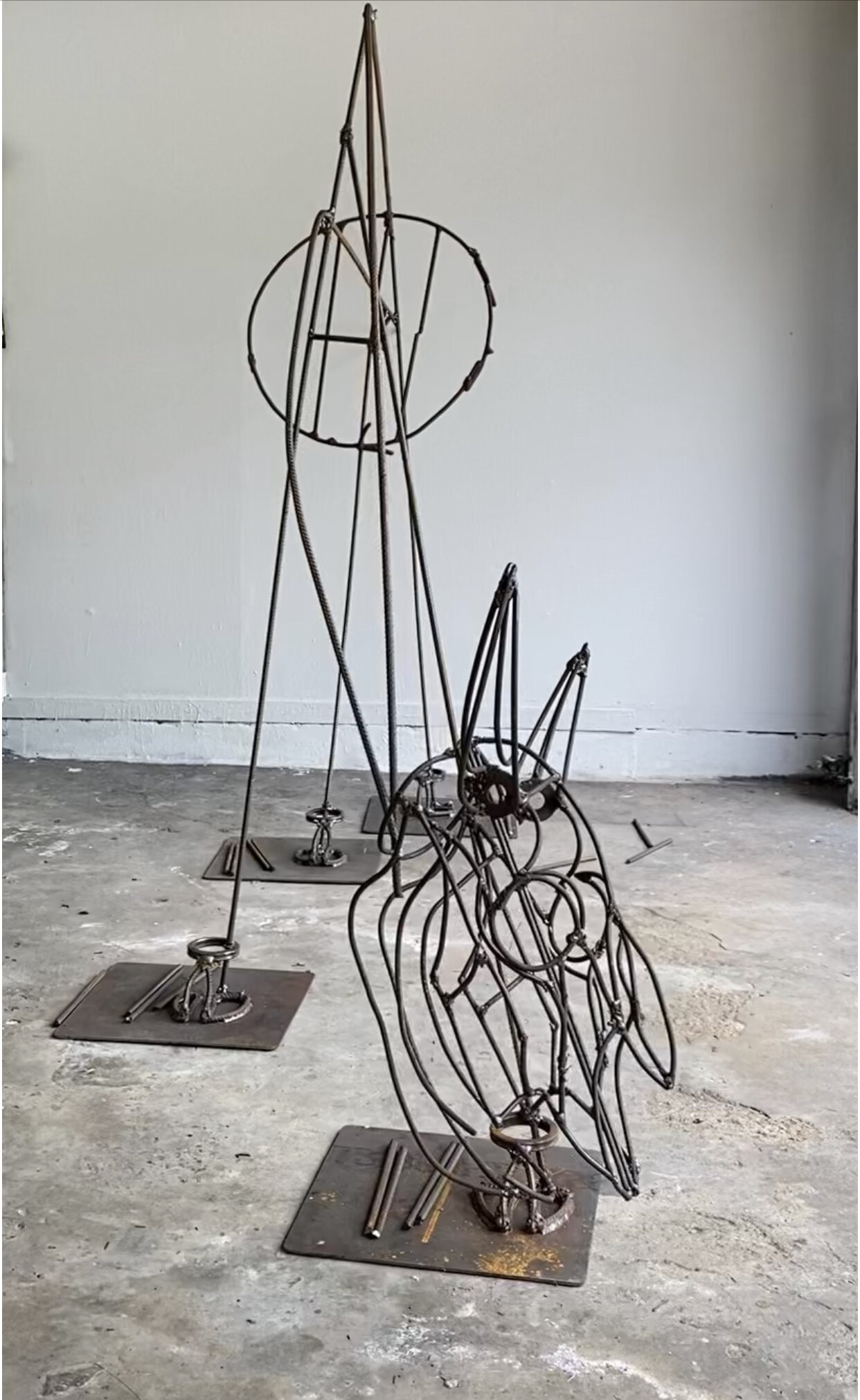

I dried some cosmos leaves to us as the coat of a sculpture that is in the works - Endangered knowledge: the Soul of Humus. The piece will be in the #sculpturemonthhouston 2021 exhibit. I started the armature during COVID for the SMH 2020 exhibit, which was postponed. The sculpture looks at the ecological history of the coastal prairie. This texture is perfect #cindeeklementart #endangeredknowledge #coastalprairie #tezasart #houstonart #bioart #environmentalart #cosmos #art #sculpture #bison
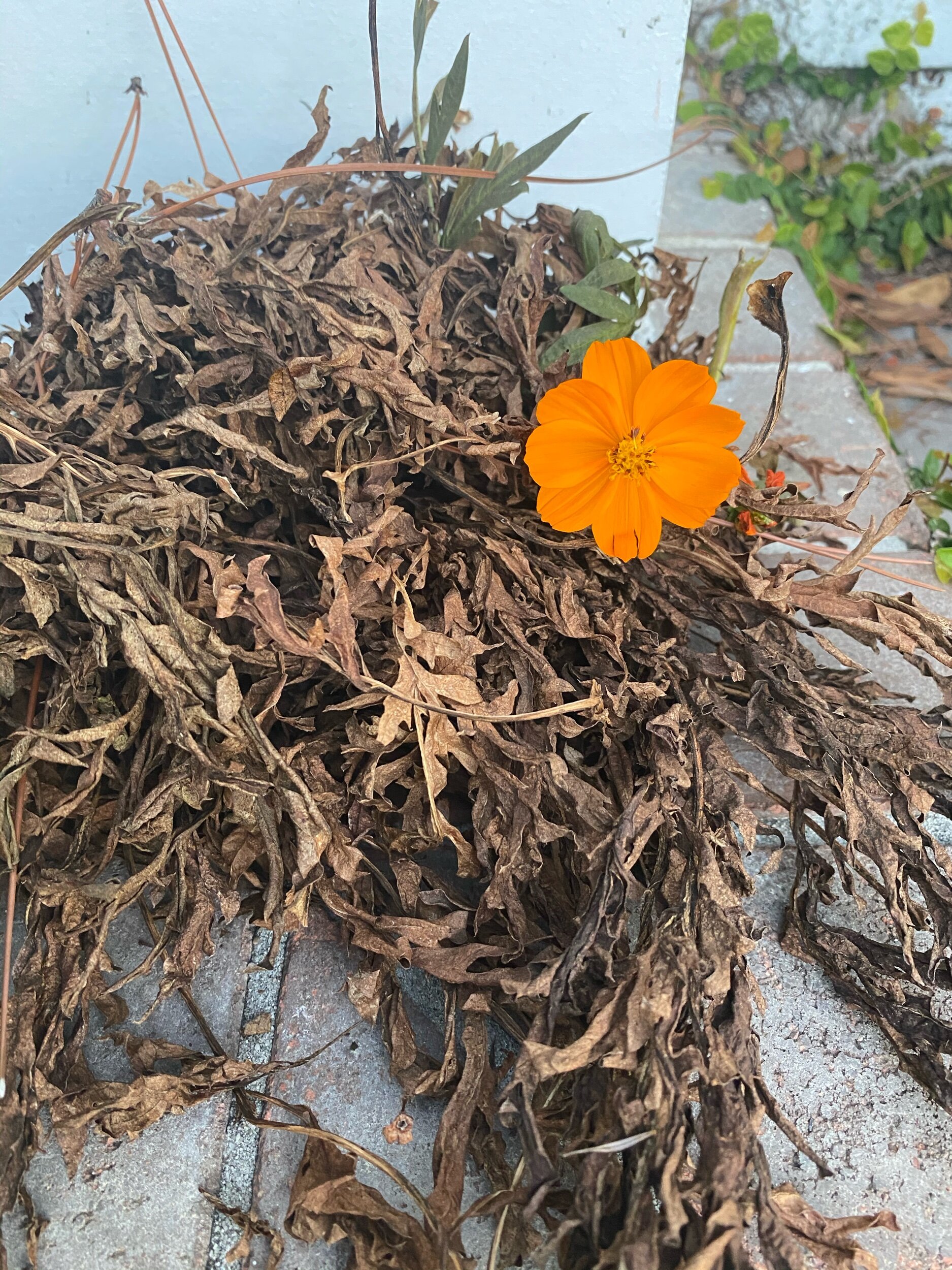
A biological memento for Same Time Next Year
Normally I do not include fleshy or soft finds. I will break that tradition with this trinket of nature. I found this larva the first week of January 2021. It is in my freezer as I write. So that I don’t have to worry about it getting thrown away, I will put it in my 2020 nest. I am hopeful that I still have the Polytgemus Moth that I collected in fall September 2919 at my studio. The two together will spark a stronger connection to appreciate and protect urban wildlife.
The sidewalks in my neighborhood are my nature trail. I walk with my eyes on the prowl for intriguing insects, exoskeletons, insect wings, feathers, dried flowers, twigs, leaves, seeds, and pods — things my children’s eyes taught me to find during our walks together over the years. Since 2013, these biological mementos have found their way into my bronze work in the molds of nests. Each piece is a reflection of that year’s ecology and records the time and movement of environmental restoration…………n Dirt to Soil, Gabe Brown quotes Don Campbell, “If you want to make small changes, change how you do things, if you want to make big changes change how you see.” When I come across intriguing flora or fauna on my urban trail, albeit few and far between, I see them as evidence that can inspire a revolution in the landscape. If they are expired and will not decompose, I collect them. I see these bronze cast nests as urban wildlife fossils—biographies, every year a chapter recording Houston's environmental awakening……….
Below m are screenshots from my seek application that I use to identify species.


A screen shot from the app seek, a wonderful app for identifying species.
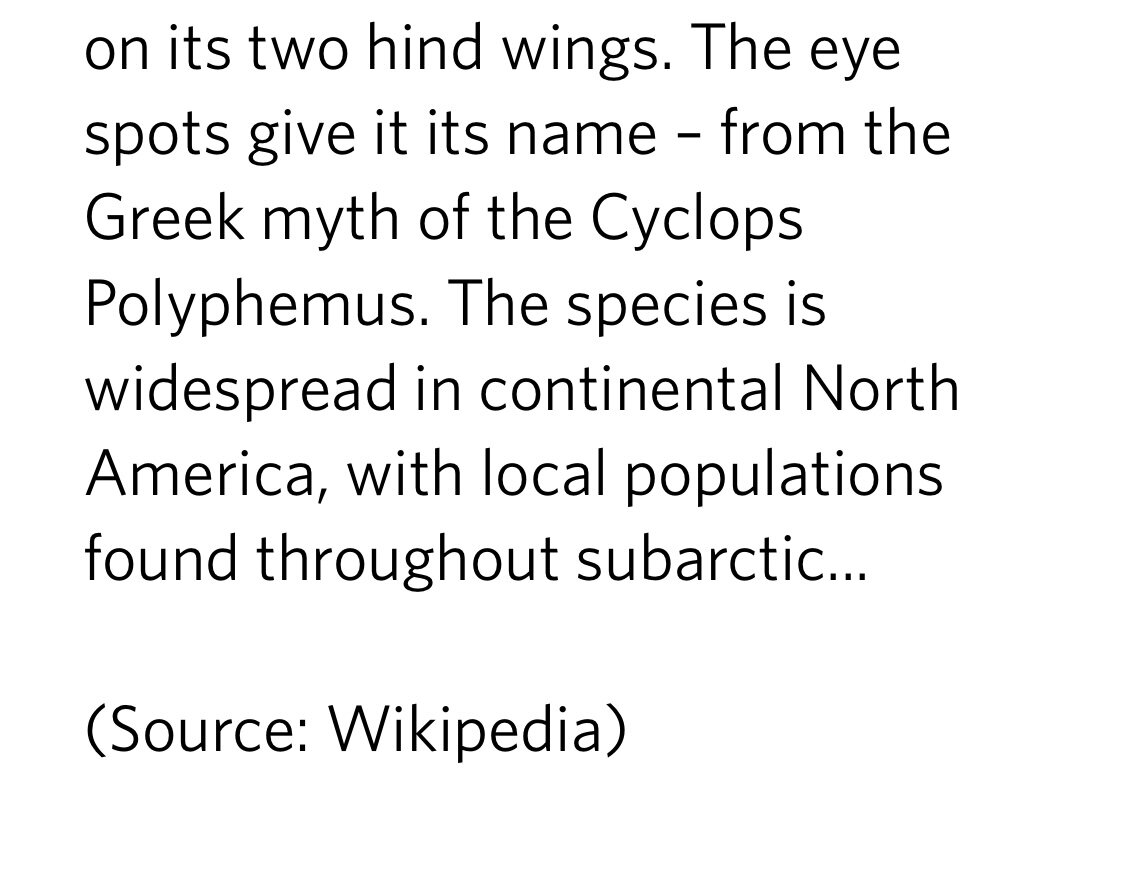



Fall 2019, I find- I think it is still in my studio in a Plastic cup.

Seven immaculately bundled trimmings from a neighbors Crape, Myrtle. Crape murdered or not I- the trees were in the backyard, could not see them.

My trimmings from a site-specific installation @Lawndale Center for the Arts. Symbiosis

It took two trips
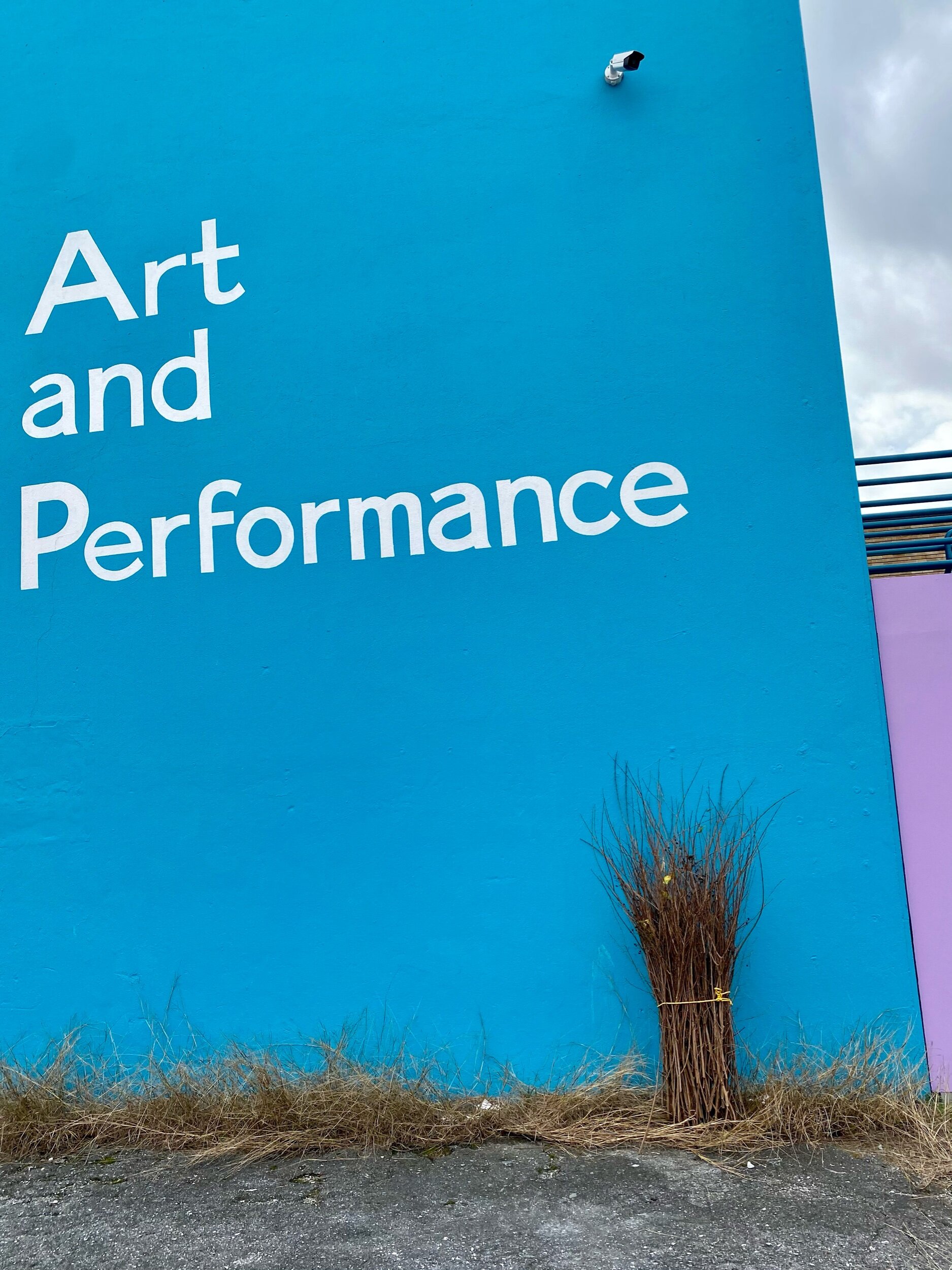
😁 when I bring new materials to Lawndale, I like to photograph them on this turquoise wall- documenting my materials. And I have to say! I love the colors - the Textures.
I declare this installation number 1. Untitled.

Installation number 2
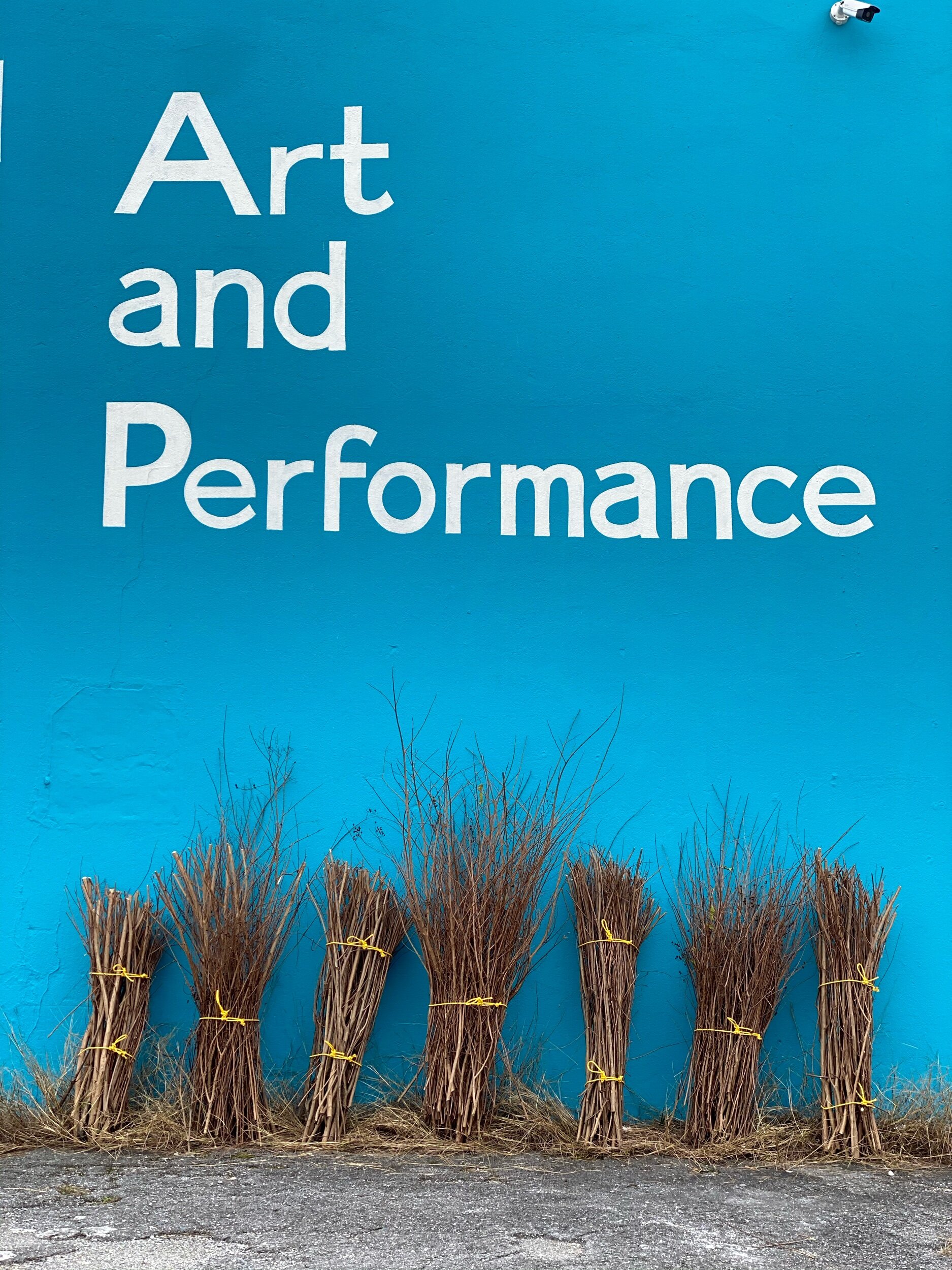
Installation number 3
The yellow ties make my heart sing, that rich brown against the turquoise, and the golden grass softening the base, I am in heaven. I see ballerinas chins up, lined up to take their bows center stage. I had one left.
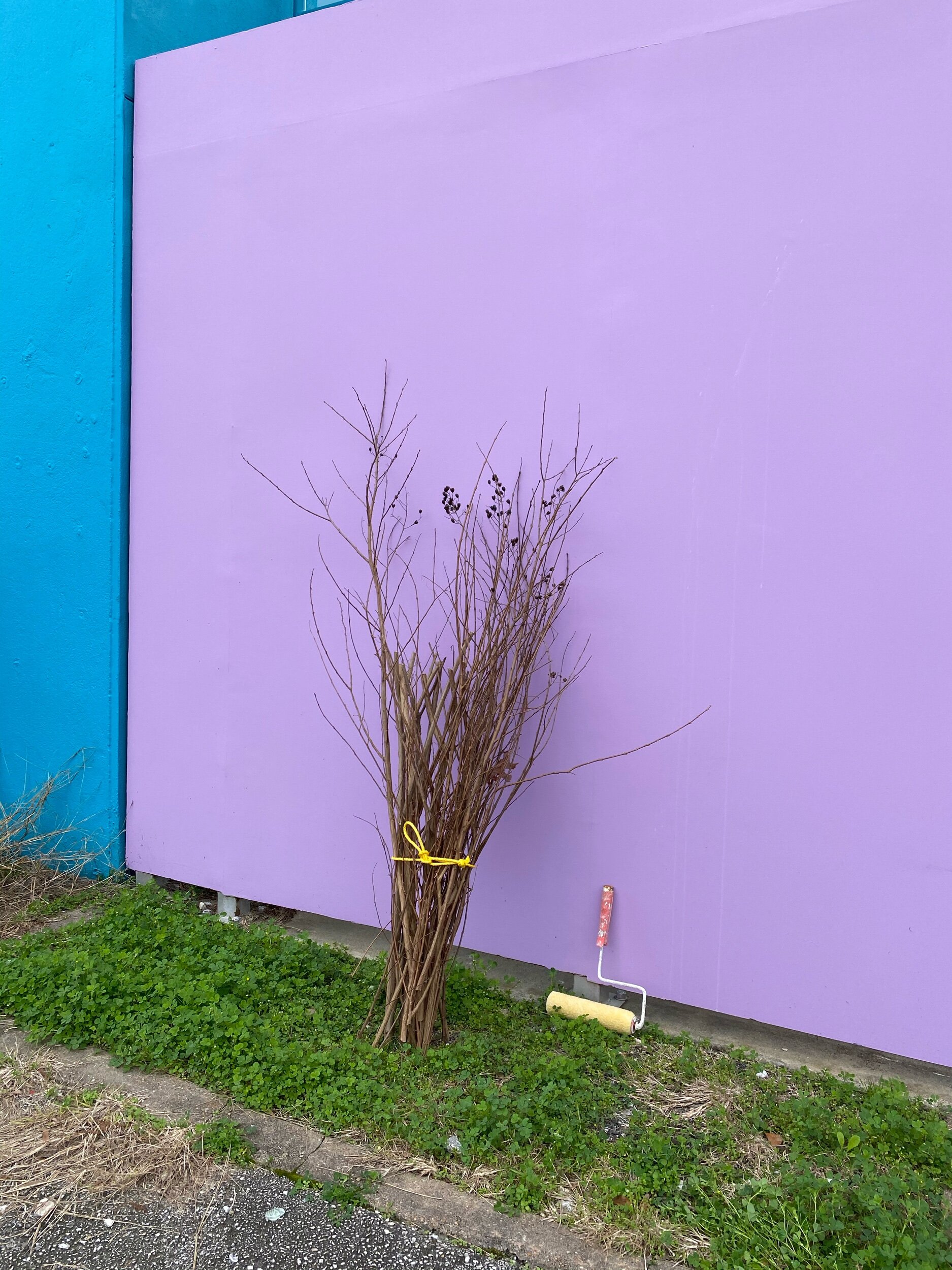
A painter from last week left their yellow roller- waste not want not. The clippings Are rich on the violet too.

Sometimes I feel guilty that I love my work so much.
After reading the document that listed Bombus Affinis as an endangered species I formed my own opinion by and it does not reflect well on the chemical industry.

Bombus Affinis - the rusty patch bumble bee
Summary from sciencedaily.com
The yield and quality of many crops benefit from pollination, but it isn't just honey bees that do this work: bumble bees also have a role. A team has used innovative molecular biological methods and traditional microscopy to investigate the pollen collecting behavior of honey bees and bumble bees in agricultural landscapes. It turns out bumble bees take much more pollen from different plant species than honey bees to satisfy their need for protein.
bumble bees are superior pollinators of tomatoes than the honey bee. The southern carpenter bee also pollinate tomatoes.
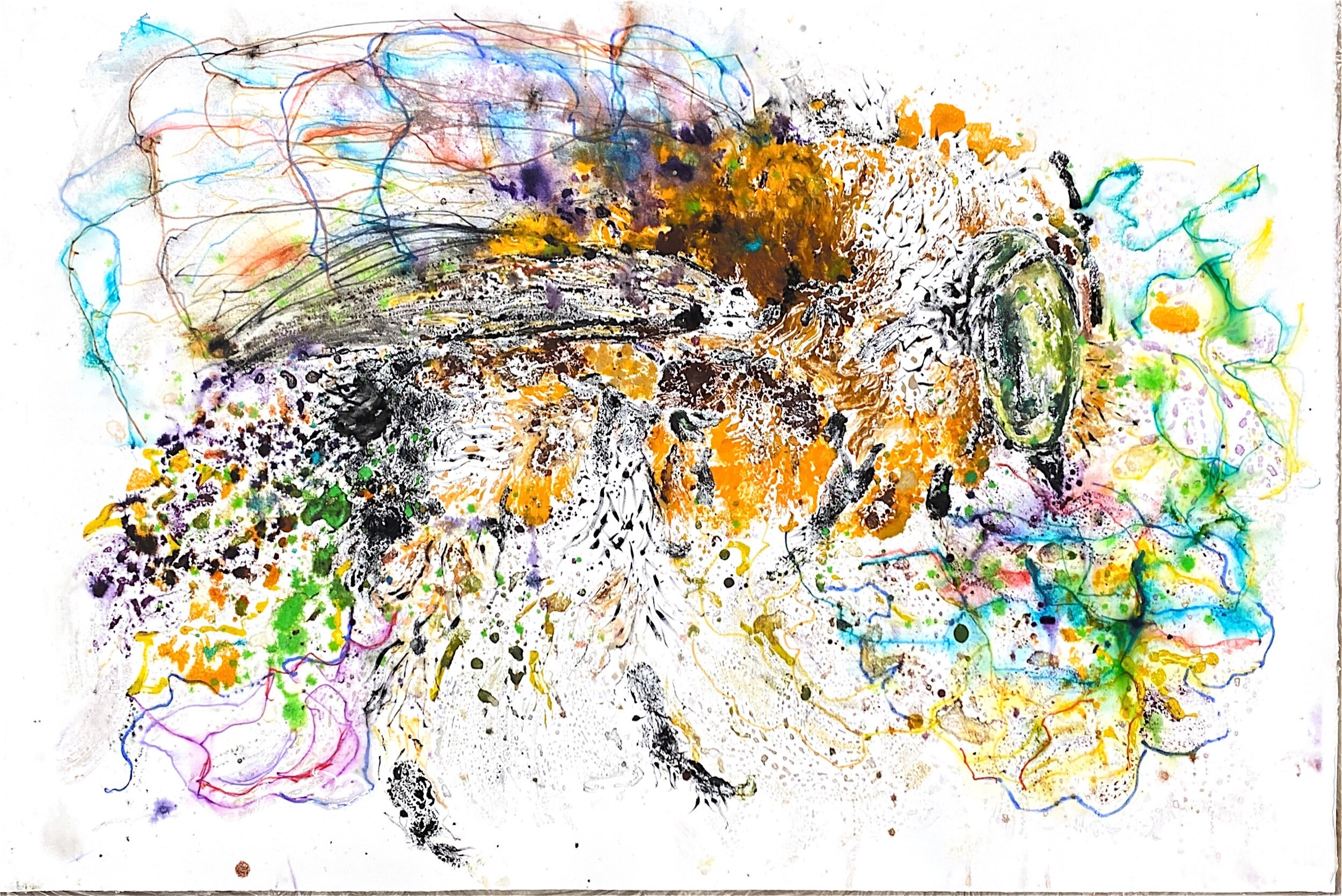


In a nutshell, this is what I hope to achieve with my site-specific piece, Symbiosis.

I am rethinking the uses of yard clippings.
In Symbiosis I am stretching my practice and creating a living piece of site-specific art activism that will reimagine a 53.5’ X 48’ traditional urban landscape/sculpture garden and answer the question: how do we holistically restore an ecological balance in Houston? Symbiosis is a collaboration with Lawndale Art Center’s community, neighbors, urban wildlife, and the coastal prairies carbon cycle.
The west border of the garden has five 1 1/2 year old Crepe Myrtle’s a tree famous for murder. The murder refers to badly pruning the tree- down to the knuckles. I was not having these Crape Myrtle’s murdered. Today I used a extractive method of sculpting and clipped- nipped - and cut the existing branches. I shaped the branches/armature of the two end trees.
A sculpture garden has the four seasons of the year and a sculpture garden has the additional change of exhibitions. The pedestals from the last exhibit were still in the garden. 🤔perfect way to highlight the beauty in the wild- the imperfect- the not immaculate urban landscape.
FYI- crepe Myrtle’s are not native however they are a cherished gift to the Art Center. As an optimistic art activist I look at the project holistically to include the desires of the Art Centers board.
When I work in wire, or steele if I cut too much I can always weld it back it add more wire they are forgiving materials. When I clip a branch it is gone- no second chance. .
#artactivism #cindeeklementart #symbiosis #lawndaleartcenter #nativeplants #coastalprairie #sculpture

Create Myrtle cuttings wildly place on a pedestal.
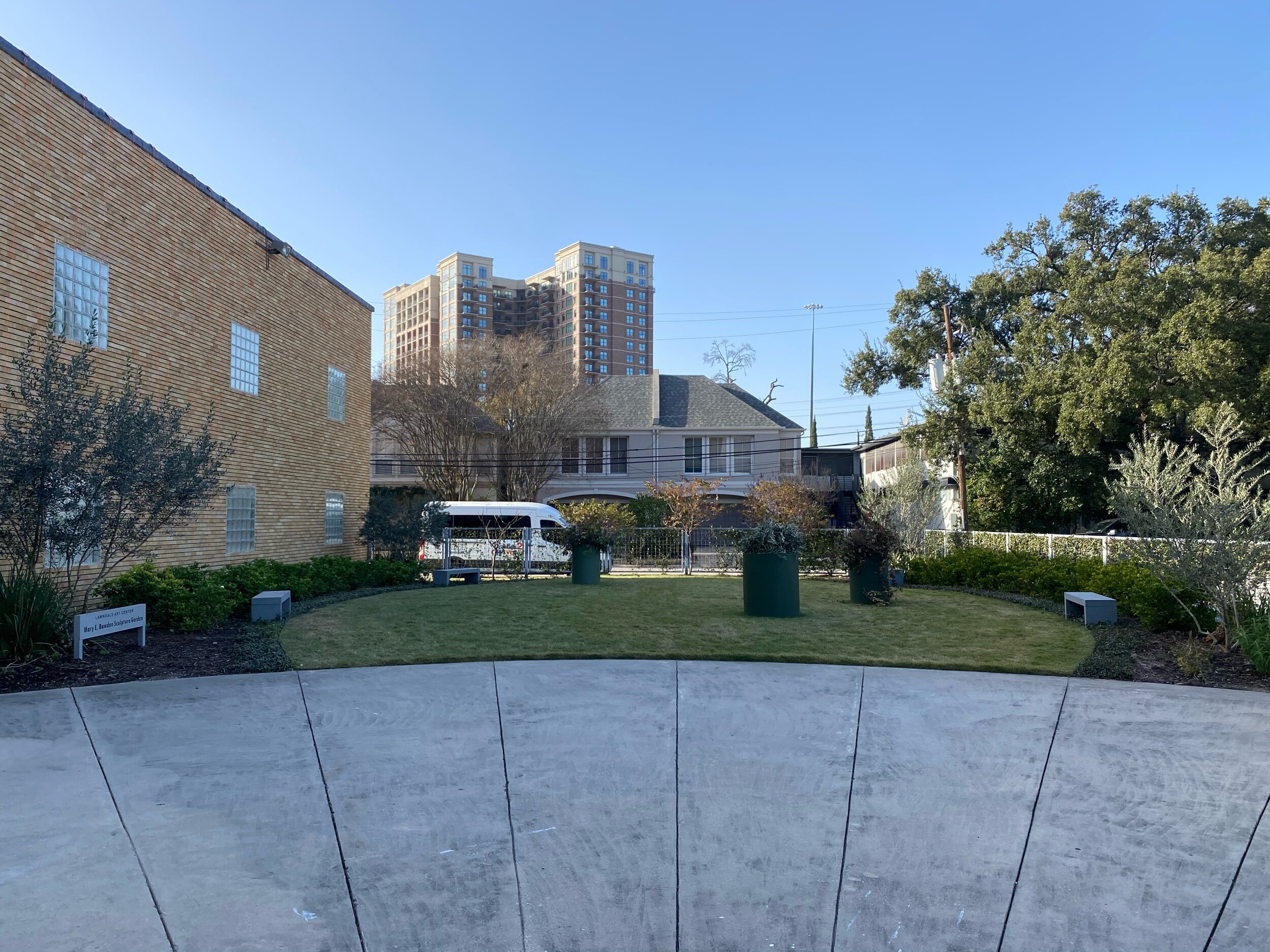

North West Crepe Myrtle after pruning.

Cuttings from two Crepe Myrtle's and the olive trees from a few weeks ago.

South end Crepe Myrtle
Symbiosis is a long term art installation. A piece of dirt in the middle of a large US city, an ecosystem that serves the local art community. Through pairing my intuitive sculptural practice, and natural history research I am sculpting the garden into an ecosystem that balances the needs of the Homo sapien art community and the urban natural world. I spend much of my time filtering through biologist research, inspirational documentaries and interviews of individuals that are leading the way. New Year’s Day I listened to a remarkable podcast an interview of Nora Bateson who is an award-winning filmmaker, writer and educator, The podcast was taped before the pandemic. She knows what she is talking about. Here are two quotes from the podcast that gave me pause and reminded me how grateful I am for my opportunity to make a difference through Symbiosis at Lawndale
“ In my little fantasy there is a great big pause button, and we can say hold everything, let’s regroup, let's turn this titanic around”
“One way or another the systems that we are within are going to change.”
A very enlightening podcast regarding how change and regeneration happens. It is haunting to consider this came out before the Covid 19 quarantine of 2020. Everything Nora talks about addresses the things I am thinking about. She is most definitely an influencer. I will continue to follow and monitor her work.
You can find the interview at The Regenarration podcast on Soundcloud Solve Everything at once.

Checking on the garden I found a moth that was still alive laying in the Pond. I rescued him and laid him out to dry.
I have read that a few migratory monarchs spend the winter in the Houston area and join a small resident population of monarchs. I have also read that it is essential to choose native milkweed as opposed to tropical. Tropical milkweed—doesn’t die back in the winter as native milkweed does. When a place to lay their eggs year-round is available, many monarchs don’t bother making the trip to Mexico.. I saw this caterpillar on my morning walk. It was seriously munching on the milkweed. Milkweed is the only plant that provides the nourishment that will transform the caterpillar into a monarch butterfly. It is important to plant only none-hybrid native milkweed. Texas milkweed will be included in my 2021 Lawndale Art Center Sculpture garden piece Symbiosis. In Symbiosis, I am stretching my practice and creating a living piece of site-specific art activism that will reimagine a 53.5’ X 48’ traditional urban landscape/sculpture garden and answer the question: how do we holistically restore an ecological balance in Houston? Symbols is a collaboration with Lawndale Art Center’s community, neighbors, urban wildlife, and the coastal prairies' carbon cycle. For more details see this link.
#carboncycle #cindeeklementart #texasart #houstonart #contemporaryart #modernart #caterpillar #monarch #milkweed #nativeplants #migration #energy #movement
#lawndaleartcenter #symbiosis #artactivism


The day after the caterpillar sighting.
How beautiful droplets of dew or rainwater puddle on the waxy leaf surfaces? They provide the watering holes for nature’s tiniest creatures.🐞🐛🕸️🦎🐌🐸🐜🦋🐝
What do you see when you see a leaf? ☘️🌿🌱🍀
I see a unique natural system. Leaves multi-functioning as micro reservoirs, coats of armor protecting the soil, and micro floodgates slowing rainwater. 💦🌊💧
On the Coastal prairie, leaves function to protect the soil from being compacted by the pelting raindrops. If the heavy raindrops fall is not broken by layers of leaves and organic matter, the tiny cavities in living soil collapse, and rainwater moves horizontally across our landscape instead of into the tiny reservoirs in the soil. We need these small cavities to allow water to penetrate deep into the soil. Leaves also slow rain droplets giving the soil time to transport the rain to its deepest roots. Once the rain is in the ground cooling our planet leaves protect the soil from the heat of the day. This multilayered ground cover gives rain more time to trickle into the aquifer. Purifying our water and cooling our planet. How amazing are leaves? As an artist my how we see urban landscapes
My work records endangered knowledge to the collective memory and reimagines urban landscapes to holistically balance the needs of humanity and wildlife.
In Symbiosis I am stretching my practice and creating a living piece of site-specific art activism that will reimagine a 53.5’ X 48’ traditional urban landscape/sculpture garden and answer the question: how do we holistically restore an ecological balance in Houston? Symbiosis is a collaboration with Lawndale Art Center’s community, neighbors, urban wildlife, and the coastal prairies carbon cycle. #symbiosis #lawndaleartcenter #urbanlandscapes #artadia #coastalprairie #water #leaves #conservation art #bioart #nature #contemporaryart #modernart #artactivism #cindeeklementart #texasart #houstonart

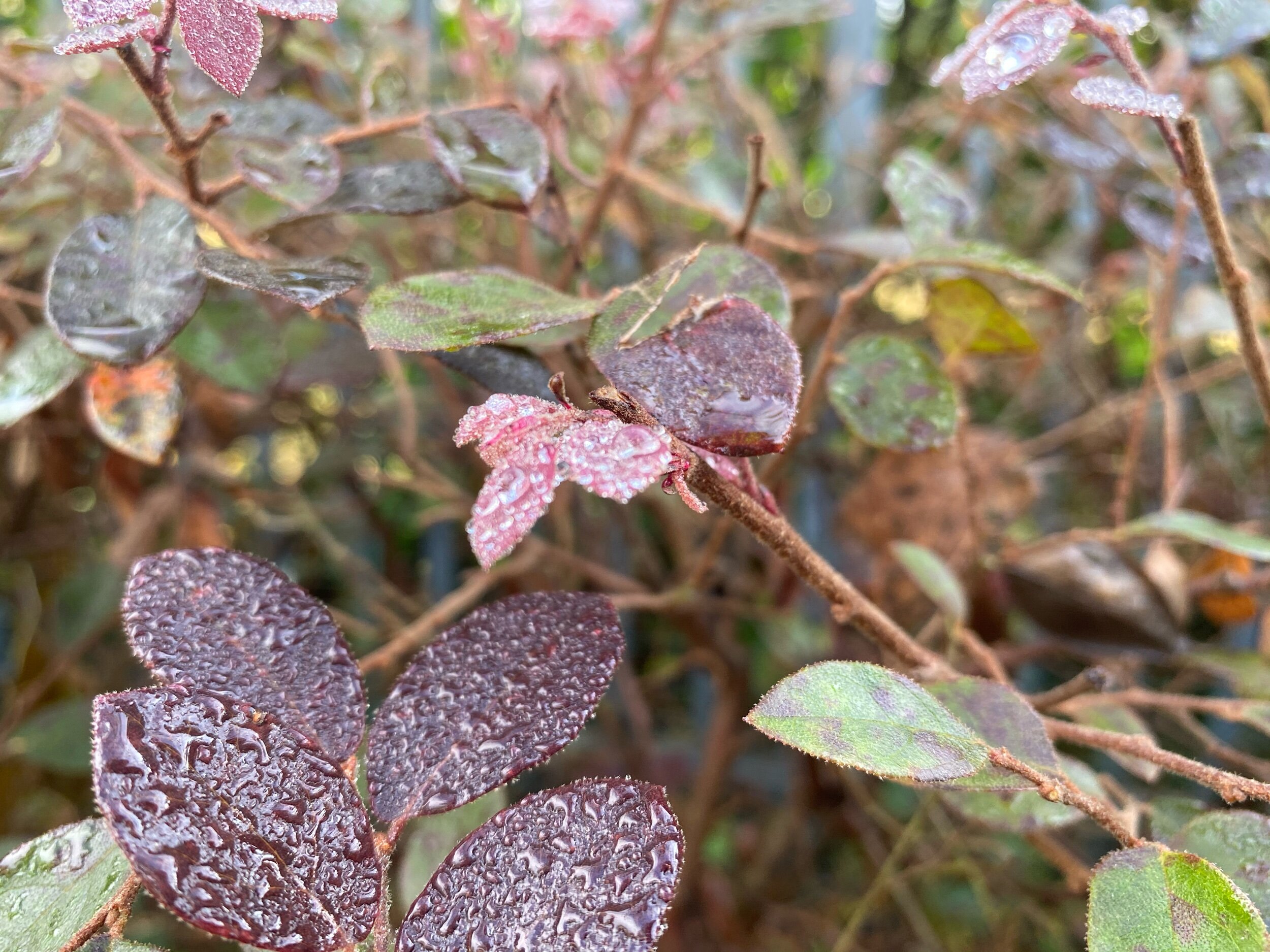
Every morning I start my day reading an email from Sciencedaily.com. I read the environmental and health-related research news, scanning for articles that relate to my environmental/conservation sculptures and monoprints. The article Living environment affects the microbiota and health of both dogs and their owners Is an exciting read for me. My World of Hum kinetic sculpture was inspired by the impact pesticides have on native bee microflora and one aspect of my current work in progress Symbiosis at Lawndale addresses soil microbes in the sculpture garden.

Visitors are relaxing in the garden during a performance piece at the fall opening event.
Dogs are a large part of urban living and, surprisingly, at Lawndale Art Center. Every other day I stop by Lawndale to study the garden, looking for any changes in the soil, leaves, vines, pond water, and look and listen for any wildlife. Often I run into neighbors of Lawndale with small dogs that visit the garden. Stephanie, her four-year-old daughter, and King Charles Spaniel also spend time together enjoying the outdoors in the garden. Sometimes on Sundays, I bring my labrador Tobi with me. It is hard to judge the impact of urban landscapes on those who visit these green spaces with their pets. Living soil unquestionably has an impact on our microbiomes and our pets as well as supports urban wildlife. One of the most interesting books on the subject of our microbiome is I Contain Multitudes by Ed Yong. Dogs

Basically everything we do impacts our microbiomes. In order to build a healthy immune system a key element in any environment is diversity. My sculpture Symbiosis will be have a positive affect on the microbiota and health of both dogs and their owners who spend time in the garden.